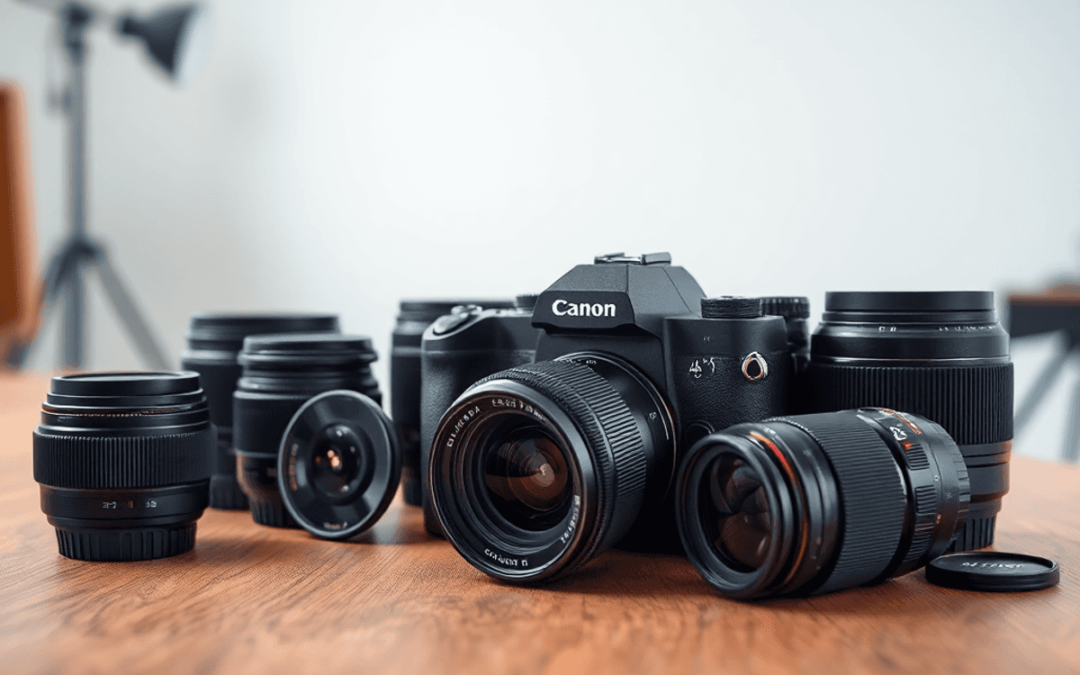
by admin | Mar 17, 2025 | Blog
As a photographer, your photographic equipment is more than just tools—it’s your livelihood. From high-end cameras to specialized lenses, your gear represents a significant investment. But what happens if your equipment is stolen, damaged, or lost? That’s where insuring photographic equipment comes in.
In this guide, we’ll walk you through everything you need to know about protecting your gear in 2025. Whether you’re a professional or a hobbyist, understanding your insurance options can save you from costly setbacks and give you peace of mind. Let’s dive in!
Why Insuring Photographic Equipment is Essential
Your photographic equipment is vulnerable to a variety of risks, including theft, accidents, and natural disasters. Without proper insurance, replacing or repairing your gear can be financially devastating. Here’s why insuring your equipment is a must:
- Financial Protection: Covers the cost of repairs or replacements.
- Peace of Mind: Allows you to focus on your craft without worrying about potential losses.
- Professional Requirements: Many clients and venues require proof of insurance.
By the end of this guide, you’ll have a clear understanding of how to choose the right insurance policy for your needs.
5 Key Takeaways for Insuring Photographic Equipment
Here’s a quick overview of what we’ll cover:
- Understand Your Coverage Needs
- Compare Insurance Providers
- Know What’s Covered (and What’s Not)
- Consider Additional Coverage Options
- Document Your Gear for Claims
Key Point #1: Understand Your Coverage Needs
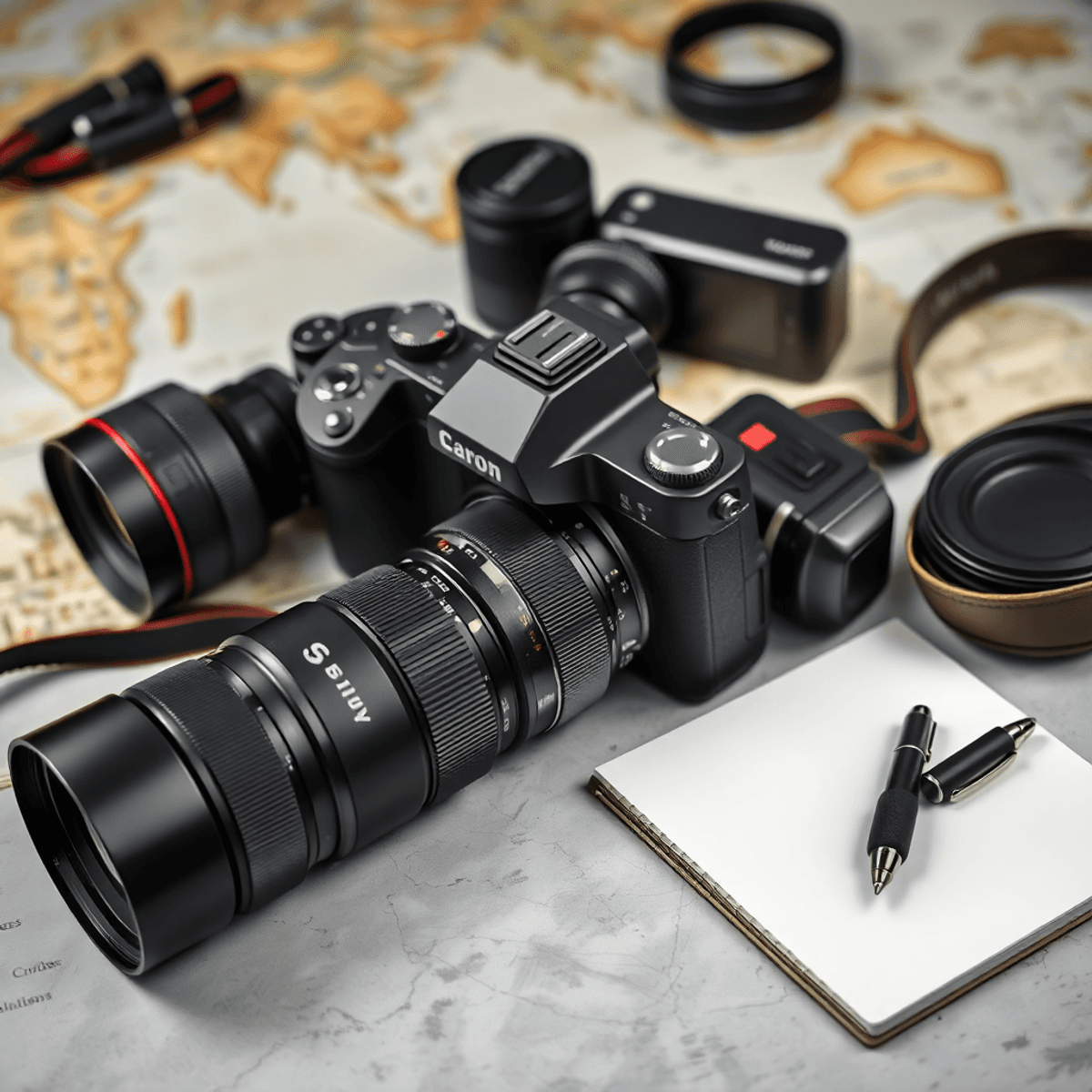 Before choosing a policy, it’s crucial to assess your photographic equipment and determine your coverage needs. Ask yourself:
Before choosing a policy, it’s crucial to assess your photographic equipment and determine your coverage needs. Ask yourself:
- What is the total value of my gear?
- Do I travel frequently with my equipment?
- Am I covered under my homeowner’s or renter’s insurance?
For example, if you’re a travel photographer, you’ll need a policy that covers international theft and damage. Understanding your specific needs will help you avoid overpaying for unnecessary coverage.
Key Point #2: Compare Insurance Providers

Not all insurance providers are created equal. When insuring photographic equipment, it’s essential to compare options to find the best fit. Here’s what to look for:
- Reputation: Choose providers with positive reviews and a strong track record.
- Coverage Limits: Ensure the policy covers the full value of your gear.
- Deductibles: Opt for a deductible that fits your budget.
Companies like Photography Insurance and Front Row Insurance specialize in camera insurance and offer tailored solutions for photographers.
Key Point #3: Know What’s Covered (and What’s Not)
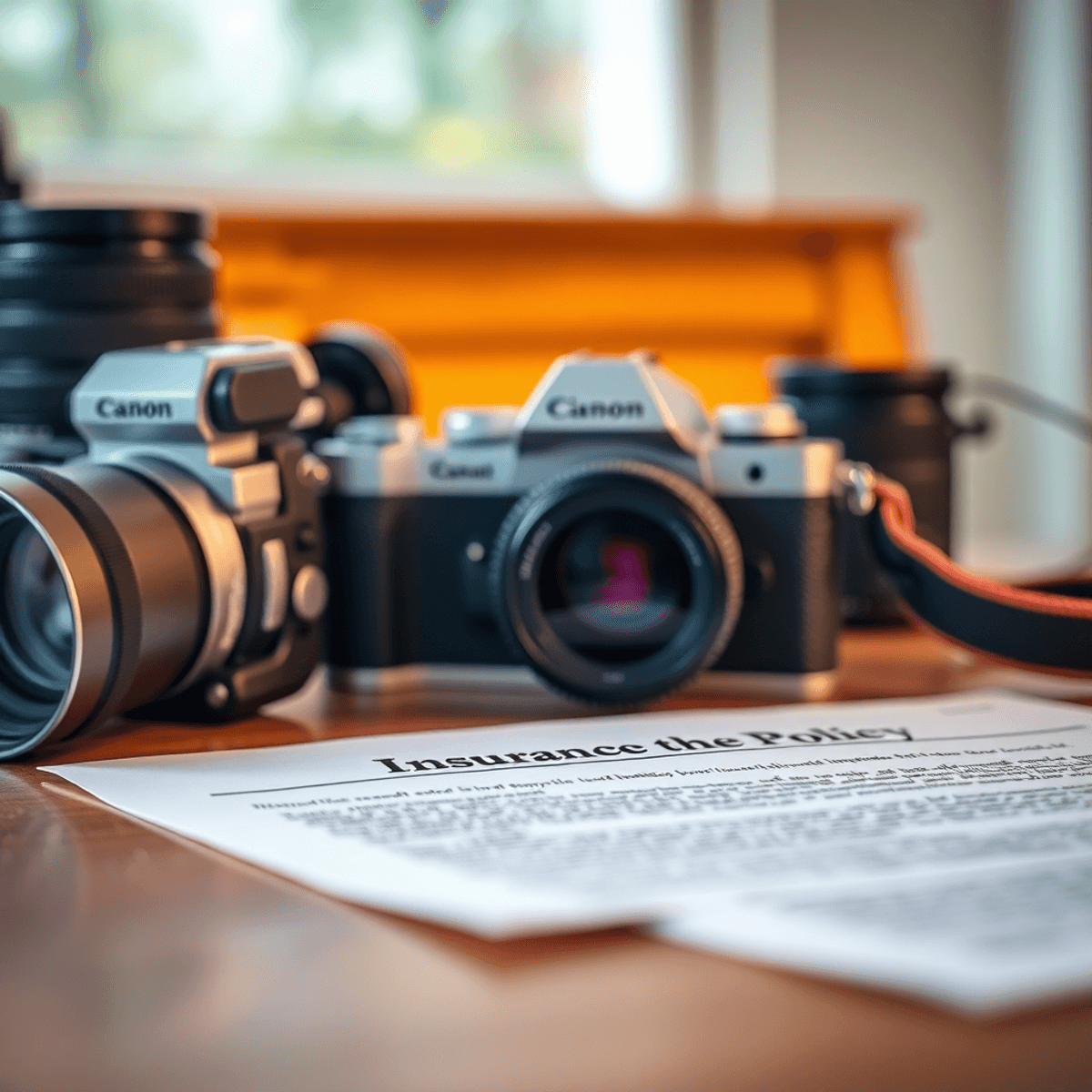 When insuring photographic equipment, it’s crucial to read the fine print. Policies vary, and some may exclude certain types of damage or theft. Here’s a breakdown of common coverage areas:
When insuring photographic equipment, it’s crucial to read the fine print. Policies vary, and some may exclude certain types of damage or theft. Here’s a breakdown of common coverage areas:
- Theft: Covers stolen equipment, even during travel.
- Accidental Damage: Includes drops, spills, and other mishaps.
- Natural Disasters: Protects against floods, fires, and earthquakes.
However, some policies may exclude wear and tear or damage caused by negligence. Always clarify these details before signing up.
Key Point #4: Consider Additional Coverage Options
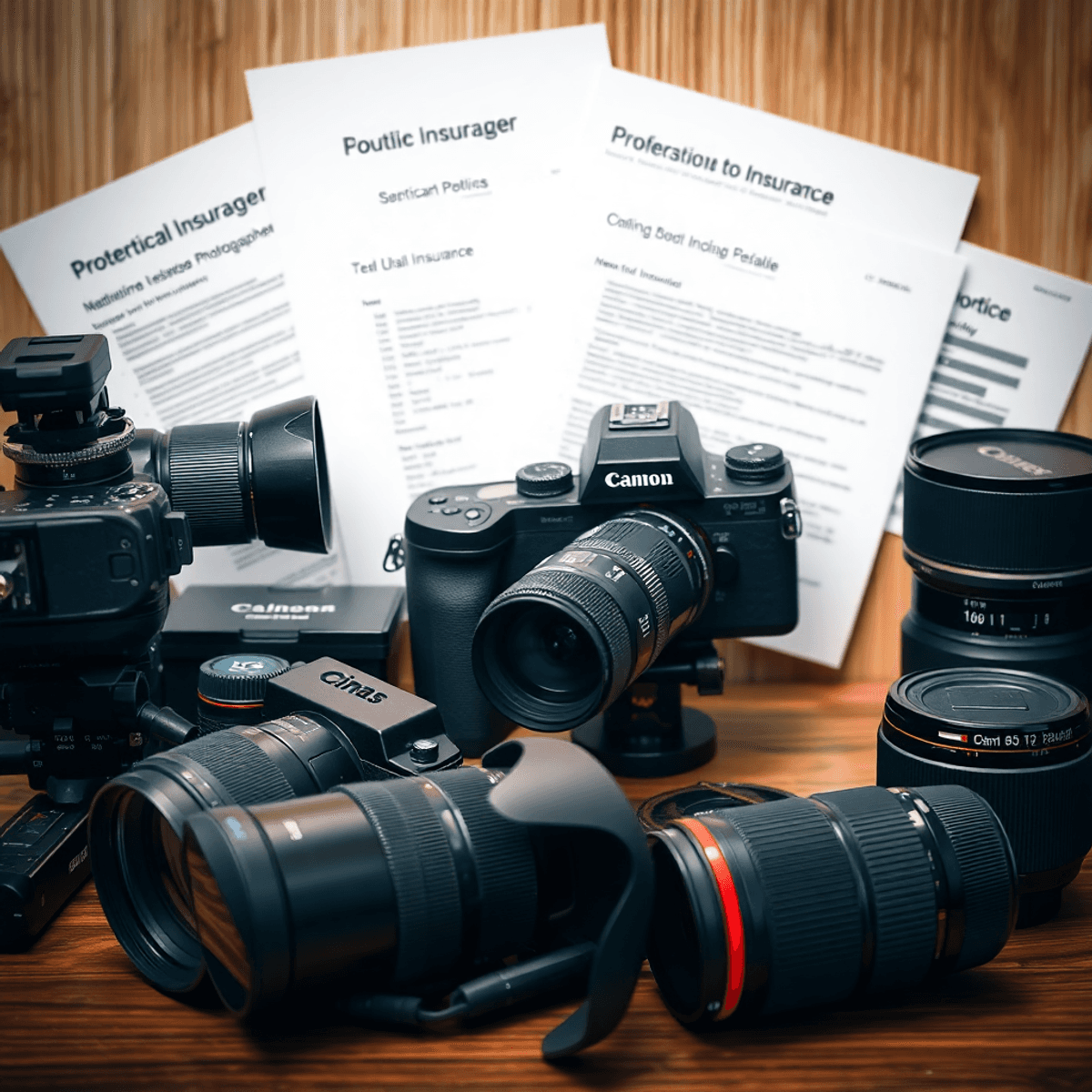 Beyond basic coverage, you may want to explore additional options to fully protect your photographic equipment. These include:
Beyond basic coverage, you may want to explore additional options to fully protect your photographic equipment. These include:
- Liability Insurance: Covers damages or injuries caused by your gear.
- Rental Equipment Coverage: Protects rented or borrowed gear.
- Business Interruption Insurance: Compensates for lost income due to equipment loss.
These add-ons can provide extra security, especially for professional photographers.
Key Point #5: Document Your Gear for Claims
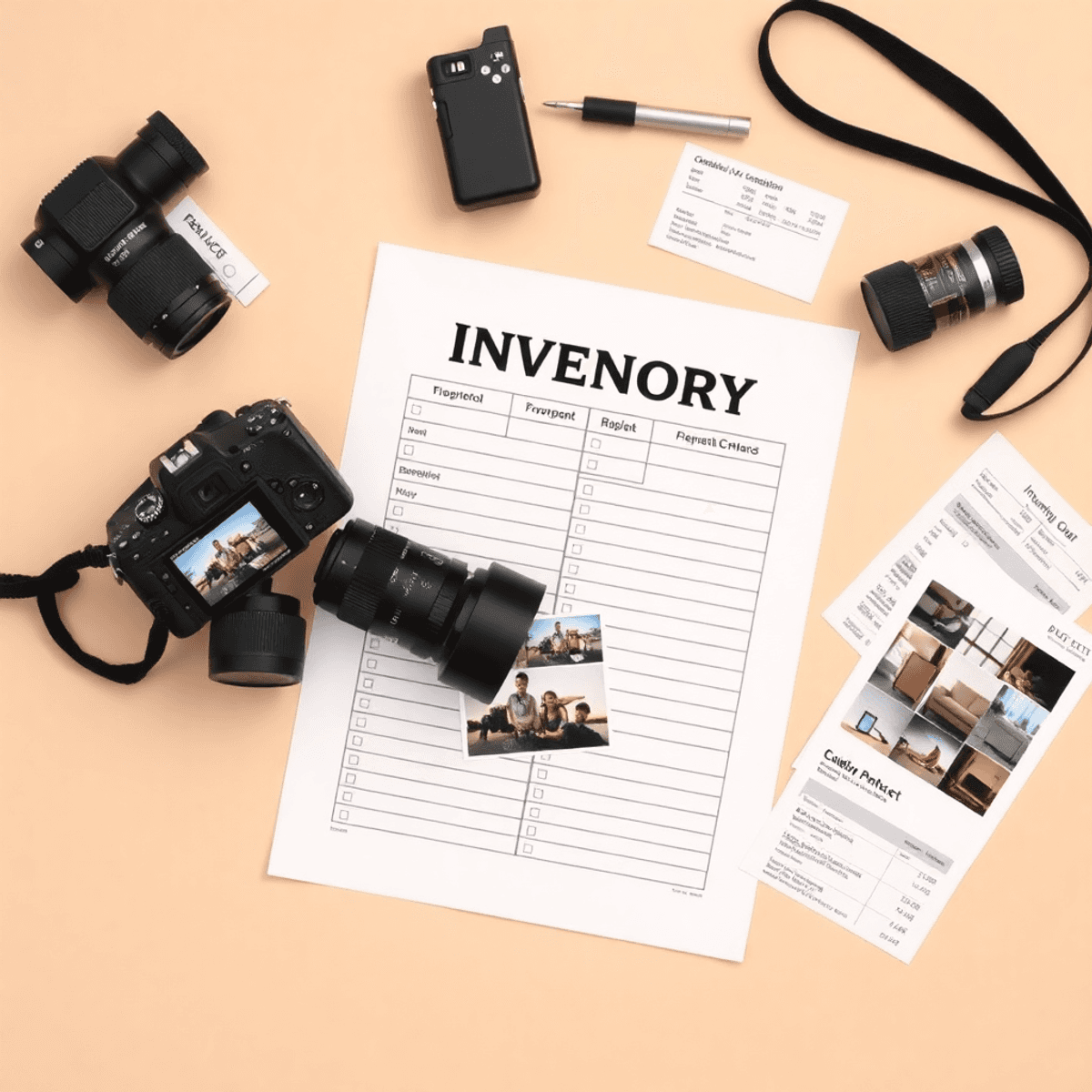
In the event of a claim, proper documentation is essential. Here’s how to prepare:
- Create an Inventory: List all your gear, including serial numbers and purchase dates.
- Take Photos: Capture images of your equipment from multiple angles.
- Keep Receipts: Store digital or physical copies of purchase receipts.
This documentation will streamline the claims process and ensure you receive fair compensation.
Call to Action
Don’t wait until it’s too late—protect your photographic equipment today! Get a free quote for your photography website design and enjoy our premium blog for your brand that will get your organic traffic from google. Get Your Free Quote Now
For more tips on protecting your photography business, subscribe to our newsletter. Subscribe Here
FAQs
1. Is my photography gear covered under homeowner’s insurance?
Some homeowner’s policies may cover personal belongings, but they often have limits and exclusions. A dedicated camera insurance policy is recommended for full coverage.
2. How much does it cost to insure photographic equipment?
Costs vary based on the value of your gear and coverage options. On average, expect to pay 1-2% of your equipment’s total value annually.
3. Can I insure used or vintage photography equipment?
Yes, many providers offer coverage for used or vintage gear. Be sure to provide accurate valuations and documentation.
4. What should I do if my equipment is stolen?
File a police report immediately, then contact your insurance provider to start the claims process. Proper documentation will expedite your claim.
By following this guide, you’ll be well-equipped to protect your photographic equipment and focus on what you do best—capturing stunning images. Don’t wait; secure your gear today!
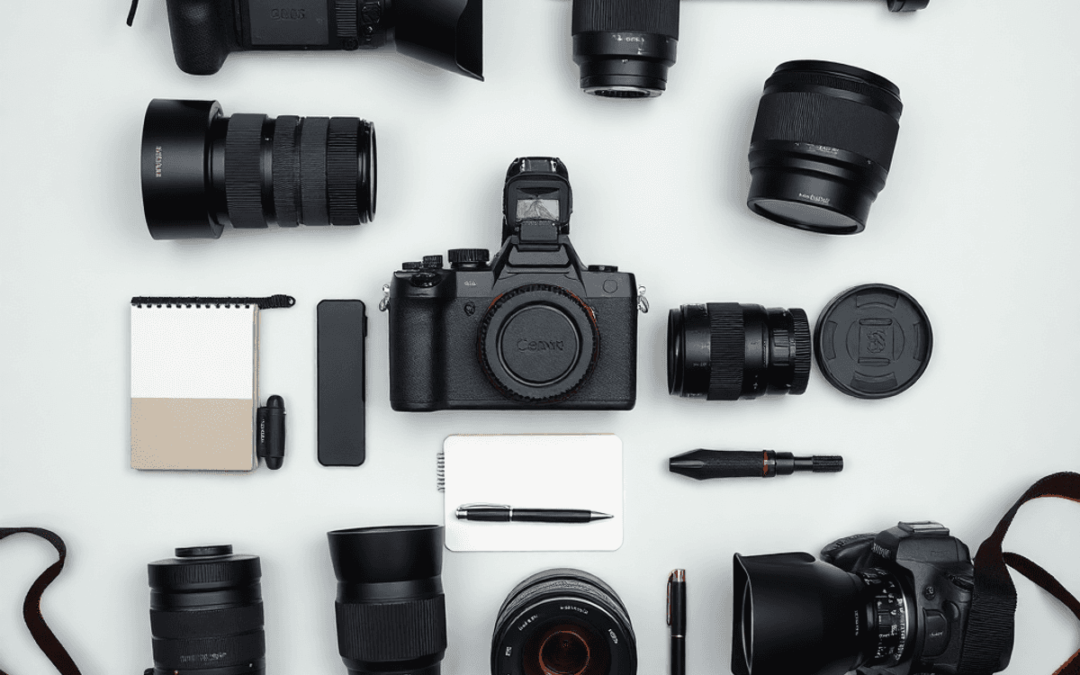
by admin | Mar 15, 2025 | Blog
Choosing the best professional photography equipment can be overwhelming, especially with the vast array of options available today. Whether you’re a seasoned photographer or just starting, the right gear can make all the difference in capturing stunning images. From cameras and lenses to lighting and accessories, every piece of equipment plays a crucial role in your creative process.
In this guide, we’ll walk you through five essential tips to help you select the best professional photography equipment for your needs. By the end, you’ll have a clear understanding of what to look for and how to make informed decisions that align with your photography goals.
Why Choosing the Right Professional Photography Equipment Matters
Investing in the best professional photography equipment is not just about having the latest gadgets; it’s about finding tools that enhance your creativity and efficiency. The right gear can help you:
- Achieve higher image quality.
- Work more efficiently in different shooting conditions.
- Expand your creative possibilities.
For example, a high-quality lens can drastically improve sharpness and depth of field, while a reliable camera body ensures consistent performance in various environments. Understanding your needs and budget is the first step toward making the right choices.
5 Key Takeaways for Choosing Professional Photography Equipment
Here’s a quick overview of what we’ll cover:
- Understand Your Photography Style
- Set a Realistic Budget
- Prioritize Essential Gear
- Research and Compare Brands
- Test Before You Buy
Key Point #1: Understand Your Photography Style
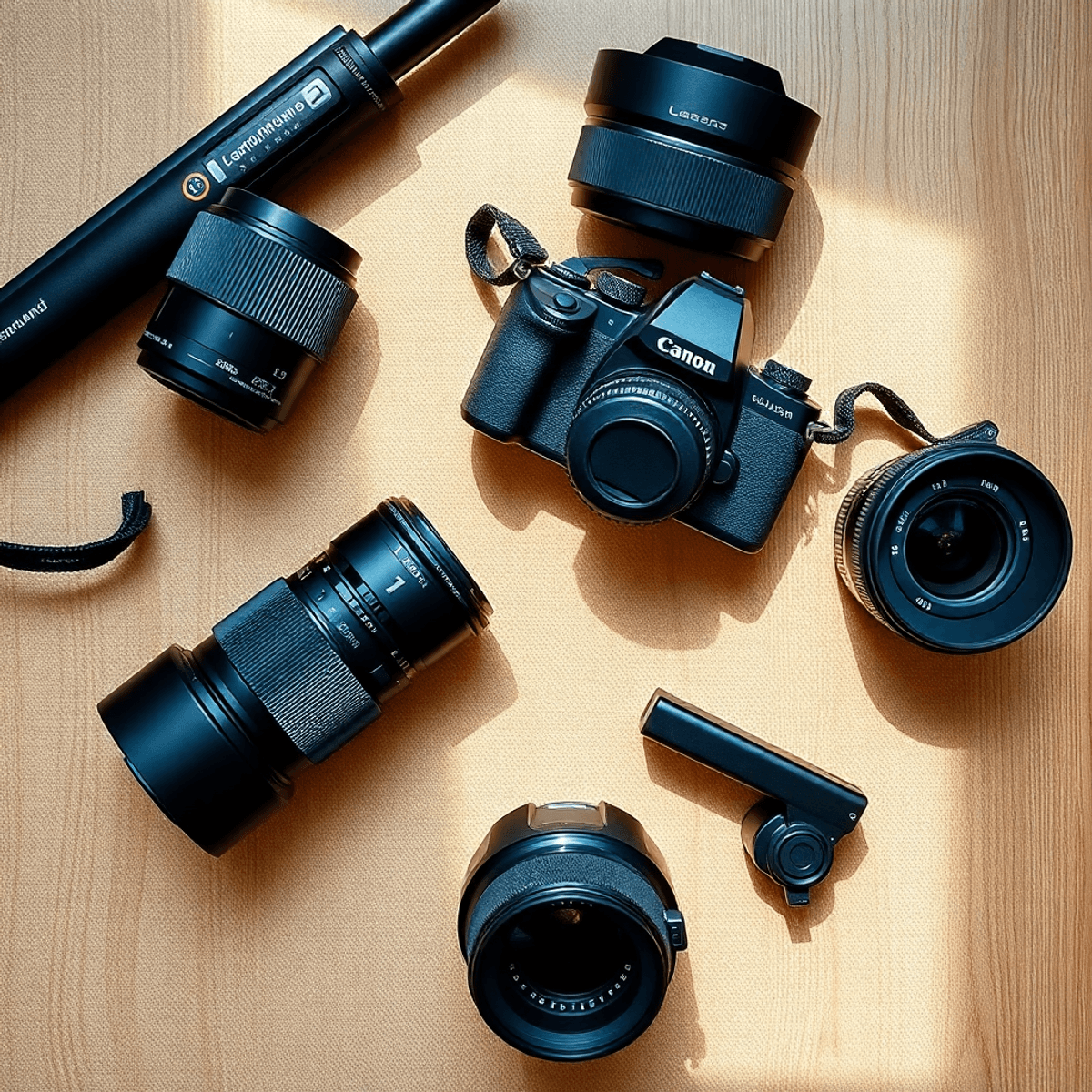
Your photography style is the foundation for choosing the right equipment. Are you into portrait photography, landscapes, or action shots? Each genre requires specific tools. For instance:
- Portrait Photographers: Prioritize lenses with wide apertures (e.g., 50mm f/1.8) for beautiful bokeh.
- Landscape Photographers: Opt for wide-angle lenses and sturdy tripods.
- Action Photographers: Look for cameras with fast autofocus and high burst rates.
Understanding your niche will help you avoid unnecessary purchases and focus on gear that truly enhances your work.
Key Point #2: Set a Realistic Budget

When it comes to professional photography equipment, costs can add up quickly. Setting a realistic budget is crucial to avoid overspending. Here’s how to approach it:
- Prioritize Essentials: Start with a good camera body and a versatile lens.
- Consider Used Gear: Reputable sellers offer high-quality used equipment at lower prices.
- Plan for Upgrades: Allocate funds for future upgrades as your skills grow.
Remember, expensive gear doesn’t always mean better results. Focus on tools that align with your needs and skill level.
Key Point #3: Prioritize Essential Gear
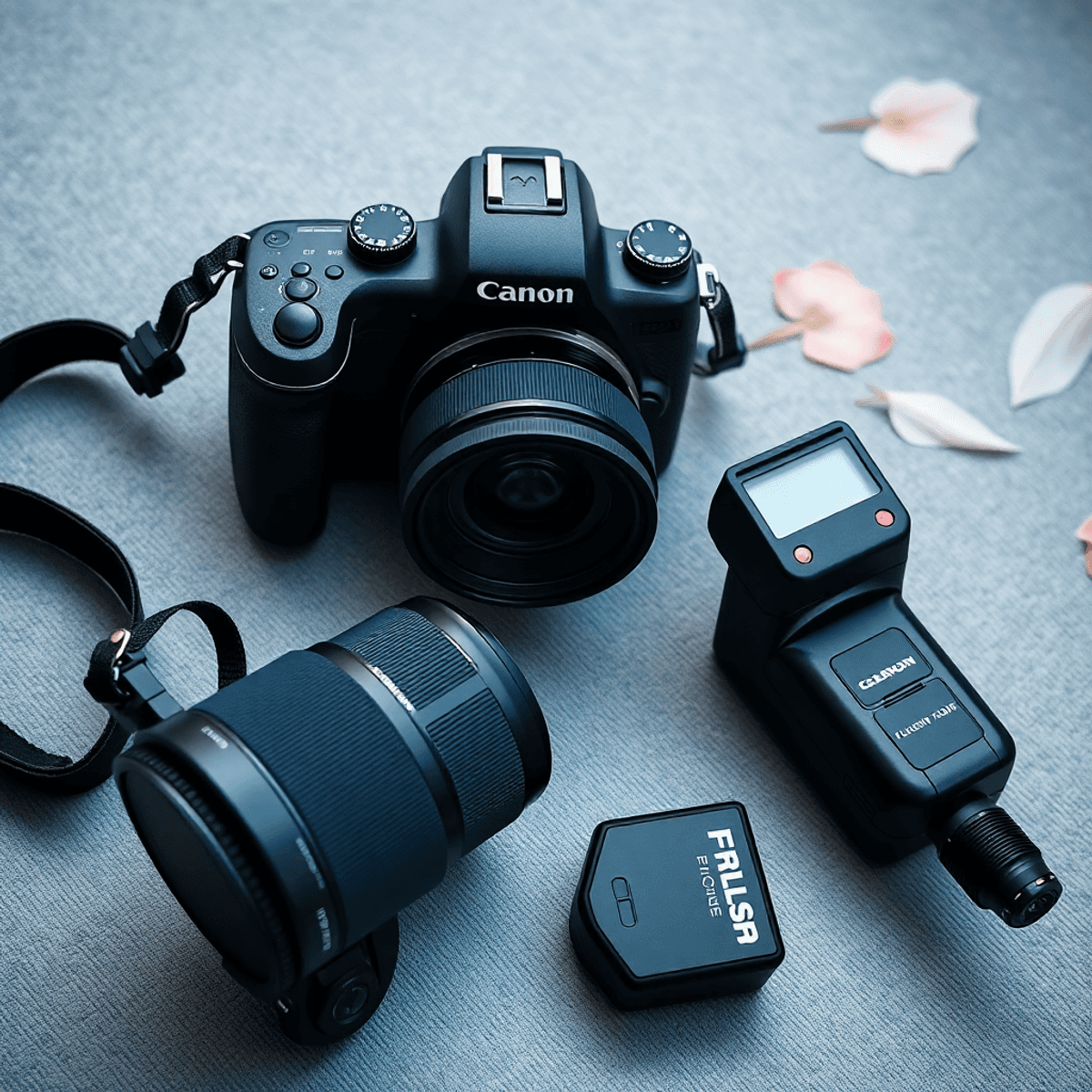
Not all photography gear is created equal. Start with the essentials and build your kit over time. Here’s a checklist:
- Camera Body: Choose one that suits your style (DSLR, mirrorless, etc.).
- Lenses: Invest in a versatile zoom lens or prime lenses for specific needs.
- Tripod: Essential for stability, especially in low-light conditions.
- Lighting: Consider external flashes or softboxes for controlled lighting.
- Accessories: Memory cards, extra batteries, and a reliable camera bag.
By focusing on the essentials, you’ll avoid clutter and ensure you have the tools you need for most shooting scenarios.
Key Point #4: Research and Compare Brands
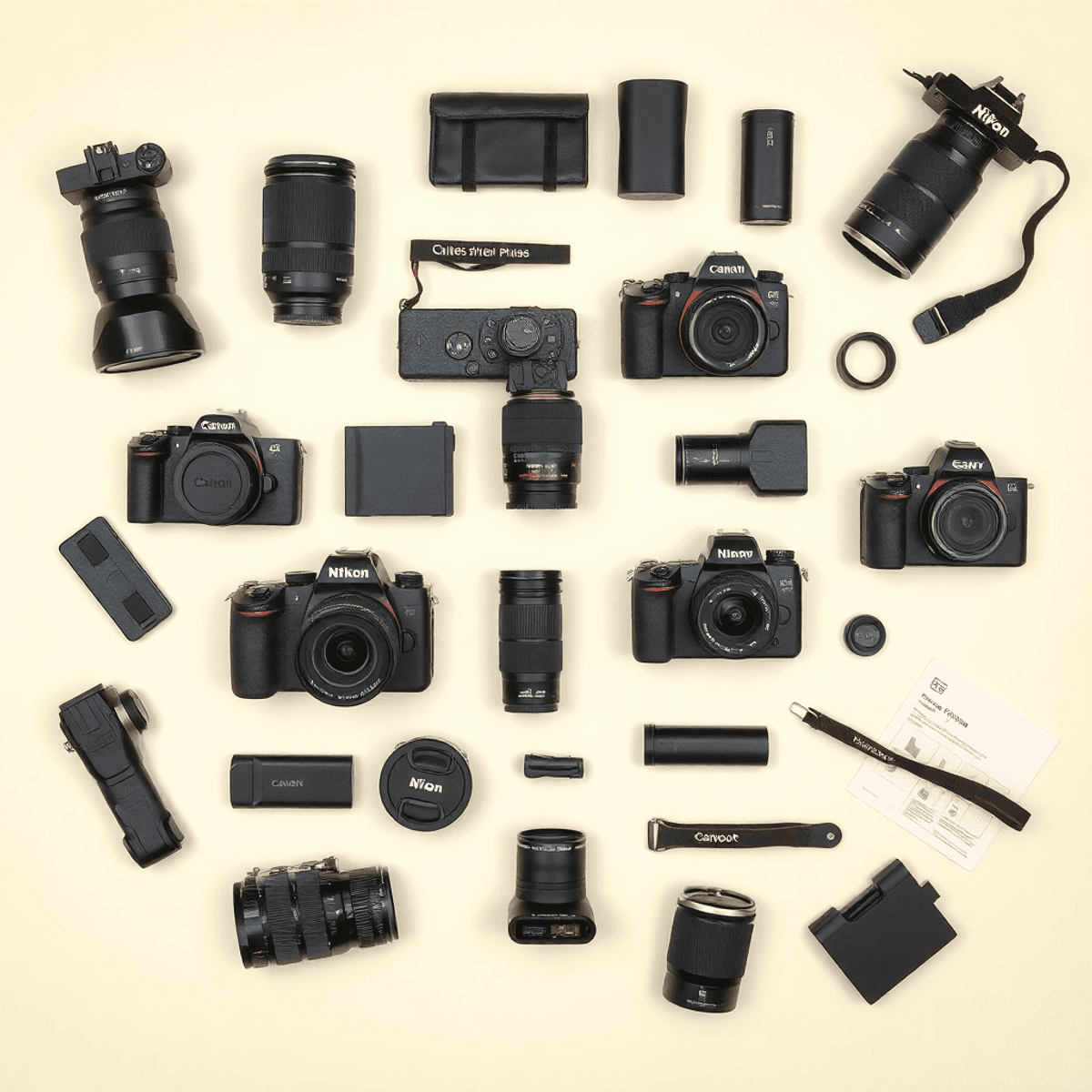
With so many brands offering professional photography equipment, it’s important to do your homework. Here’s how to compare effectively:
- Read Reviews: Check expert opinions and user feedback.
- Compare Features: Look for features that matter most to your style.
- Consider Ecosystem: Some brands offer a wide range of compatible lenses and accessories.
Brands like Canon, Nikon, and Sony are popular choices, but don’t overlook smaller brands that might offer unique features or better value.
Key Point #5: Test Before You Buy
 Before committing to any professional photography equipment, it’s crucial to test it out. Here’s why:
Before committing to any professional photography equipment, it’s crucial to test it out. Here’s why:
- Ergonomics: Ensure the camera feels comfortable in your hands.
- Performance: Test autofocus, low-light capabilities, and ease of use.
- Compatibility: Make sure it works well with your existing gear.
Visit a local camera store or rent equipment to try it out in real-world conditions. This hands-on approach can save you from costly mistakes.
Call to Action
Ready to elevate your photography game? Explore our recommended professional photography equipment and book us for your website development or blog post writing! Book Us Now
Don’t forget to subscribe to our newsletter for more tips and guides on photography gear. Subscribe Here
FAQs
1. What is the most important piece of photography equipment?
The camera body and lens are the most critical components. Invest in a reliable camera and versatile lenses to cover a range of shooting scenarios.
2. How much should I spend on professional photography equipment?
It depends on your budget and needs. Start with essentials and gradually invest in additional gear as your skills and requirements grow.
3. Should I buy new or used photography equipment?
Both options have pros and cons. New gear comes with warranties, while used equipment can save you money. Always buy from reputable sellers.
4. What’s the best camera brand for professional photography?
Popular brands like Canon, Nikon, and Sony are excellent choices, but the best brand depends on your specific needs and preferences.

by admin | Mar 5, 2025 | Blog
When it comes to telephoto lenses, Nikon offers some of the best options for photographers, and the Nikon 80-400 vs 200-500 debate is a hot topic among enthusiasts. Whether you’re capturing wildlife, sports, or distant landscapes, choosing the right lens can make or break your shots. Both lenses are exceptional in their own right, but they cater to slightly different needs and budgets.
In this blog, we’ll dive deep into the Nikon 80-400 vs 200-500 comparison, exploring their features, performance, and ideal use cases. By the end, you’ll know which lens is the perfect fit for your photography style. Let’s get started!
Nikon 80-400 vs 200-500: Key Features Compared
The Nikon 80-400mm f/4.5-5.6G ED VR and the Nikon 200-500mm f/5.6E ED VR are both stellar telephoto lenses, but they differ significantly in terms of design, performance, and versatility.
- Focal Length: The 80-400 offers a wider range, making it more versatile for closer subjects, while the 200-500 is a powerhouse for long-distance shooting.
- Aperture: Both lenses have a variable aperture, but the 80-400 has a slightly wider maximum aperture at 80mm (f/4.5).
- Weight: The 80-400 is lighter (1,570g) compared to the 200-500 (2,300g), making it more portable for travel.
- Image Stabilization: Both lenses feature Vibration Reduction (VR), but the 80-400’s system is slightly more advanced.
If you’re looking for a lens that balances versatility and portability, the Nikon 80-400 might be your best bet. However, if you need extreme reach for wildlife or sports, the Nikon 200-500 is hard to beat.
Key Takeaways: Nikon 80-400 vs 200-500
Here’s a quick summary of the main differences:
- Versatility: The 80-400 is better for varied shooting scenarios, while the 200-500 excels in long-distance photography.
- Portability: The 80-400 is lighter and easier to carry, ideal for travel photographers.
- Price: The 200-500 is more affordable, making it a great choice for budget-conscious photographers.
- Image Quality: Both lenses deliver sharp images, but the 80-400 has a slight edge in color rendition and contrast.
Key Point #1: Versatility and Focal Range
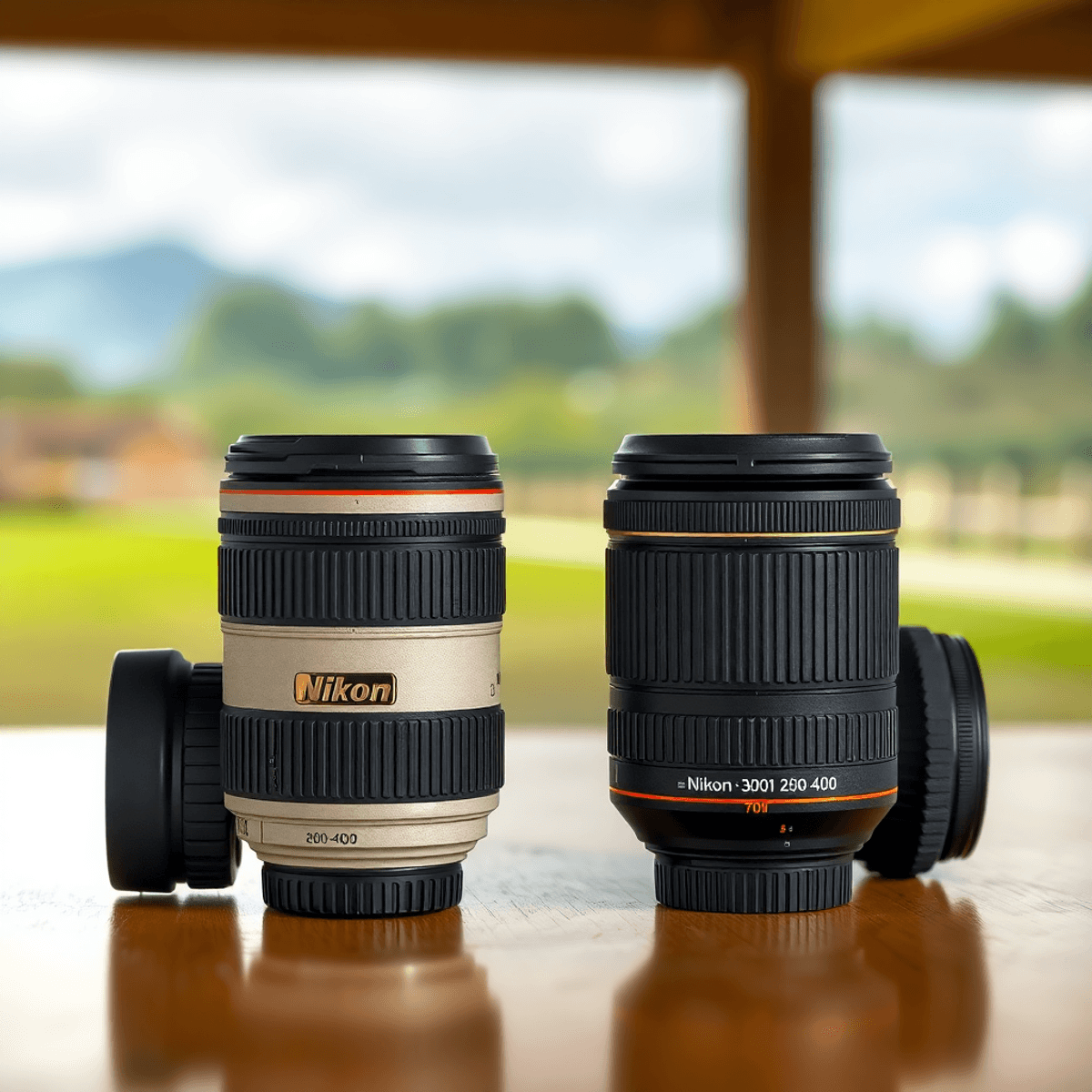 When comparing the Nikon 80-400 vs 200-500, the focal range is one of the most critical factors. The Nikon 80-400 offers a broader range, starting at 80mm, which is perfect for capturing closer subjects like portraits or events. On the other hand, the Nikon 200-500 starts at 200mm, making it a dedicated telephoto lens for distant subjects like wildlife or sports.
When comparing the Nikon 80-400 vs 200-500, the focal range is one of the most critical factors. The Nikon 80-400 offers a broader range, starting at 80mm, which is perfect for capturing closer subjects like portraits or events. On the other hand, the Nikon 200-500 starts at 200mm, making it a dedicated telephoto lens for distant subjects like wildlife or sports.
- 80-400mm: Ideal for photographers who need flexibility in their shots.
- 200-500mm: Best for those who specialize in long-distance photography.
If you’re looking for a Nikon telephoto lens that can handle a variety of scenarios, the 80-400 is the clear winner.
Key Point #2: Image Quality and Performance
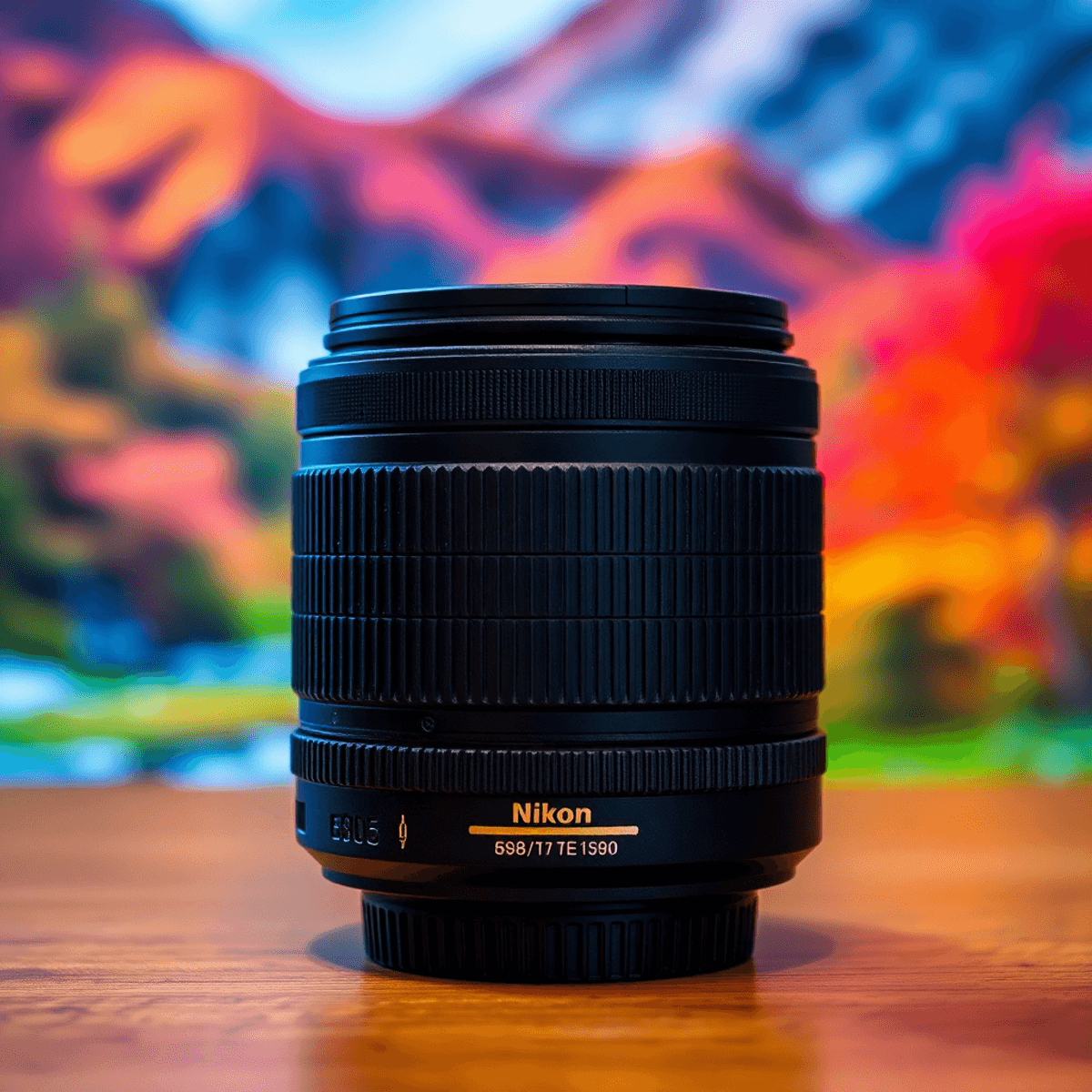 Both lenses deliver excellent image quality, but there are subtle differences. The Nikon 80-400 produces sharper images with better color contrast, thanks to its advanced optical design. The Nikon 200-500, while slightly softer at the edges, still performs exceptionally well for its price range.
Both lenses deliver excellent image quality, but there are subtle differences. The Nikon 80-400 produces sharper images with better color contrast, thanks to its advanced optical design. The Nikon 200-500, while slightly softer at the edges, still performs exceptionally well for its price range.
- Sharpness: The 80-400 is sharper across the frame, especially at wider apertures.
- Bokeh: Both lenses produce smooth bokeh, but the 80-400’s wider aperture gives it a slight advantage.
- Low-Light Performance: The 80-400 performs better in low-light conditions due to its wider maximum aperture.
For photographers prioritizing image quality, the Nikon 80-400 is the better choice.
Key Point #3: Portability and Build Quality
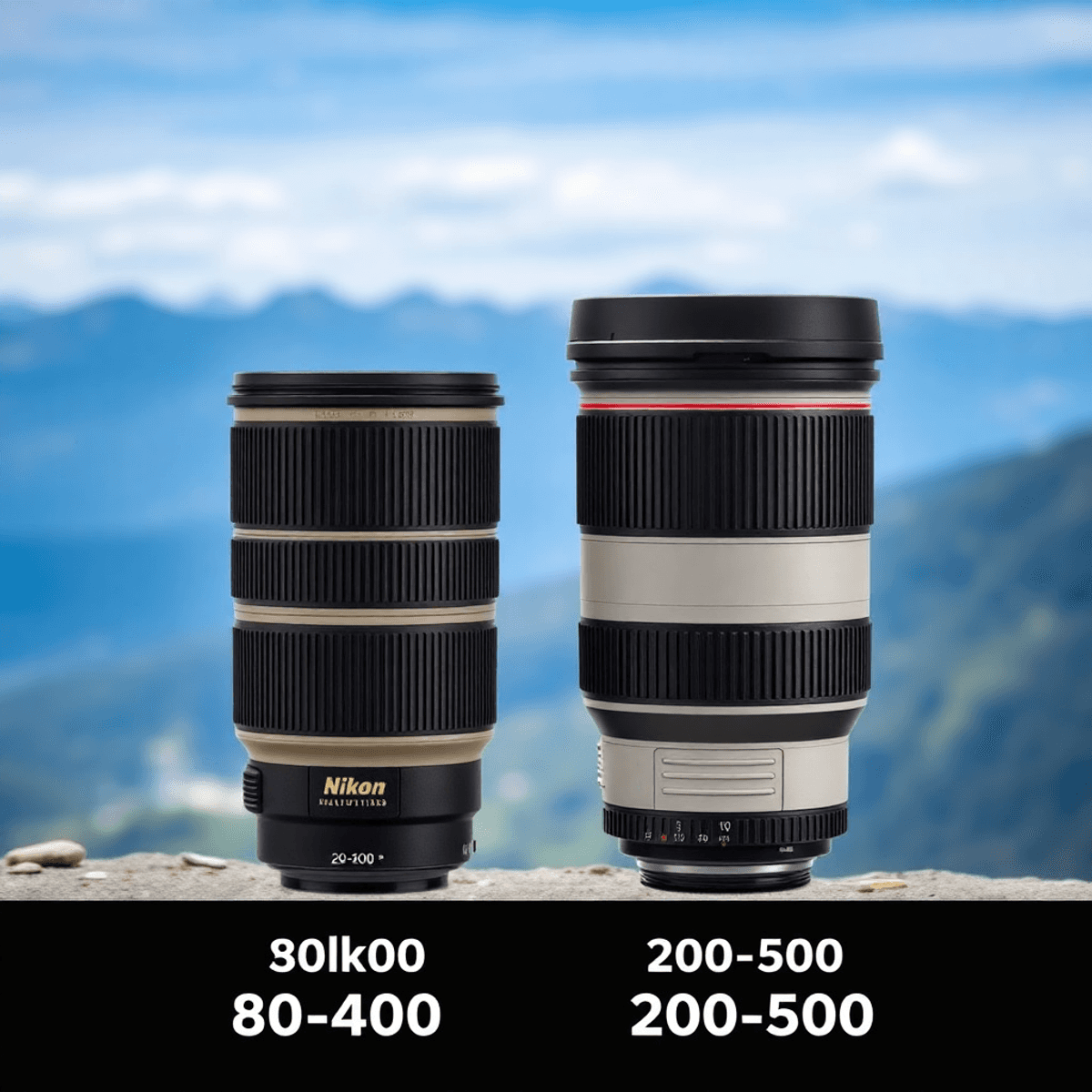 Portability is another crucial factor in the Nikon 80-400 vs 200-500 debate. The 80-400 is significantly lighter and more compact, making it easier to carry during long shoots or travel. The 200-500, while heavier, is built like a tank and feels more durable in hand.
Portability is another crucial factor in the Nikon 80-400 vs 200-500 debate. The 80-400 is significantly lighter and more compact, making it easier to carry during long shoots or travel. The 200-500, while heavier, is built like a tank and feels more durable in hand.
- Weight: 80-400 (1,570g) vs 200-500 (2,300g).
- Build: Both lenses are weather-sealed, but the 200-500 feels more robust.
- Handling: The 80-400 is easier to handle for extended periods.
If portability is a priority, the Nikon 80-400 is the way to go.
Call to Action
Ready to upgrade your photography gear? Whether you choose the Nikon 80-400 or the 200-500, both lenses offer incredible value for their price. Contract Us for your photography website design and take your photography to the next level.
Contact Us | Read More Blog From Us
FAQs
1. Which lens is better for wildlife photography, the Nikon 80-400 or 200-500?
The Nikon 200-500 is better suited for wildlife photography due to its longer focal range, allowing you to capture distant subjects with ease.
2. Is the Nikon 80-400 worth the extra cost?
If you need a more versatile lens with better portability and image quality, the Nikon 80-400 is worth the investment.
3. Can I use these lenses for sports photography?
Yes, both lenses are excellent for sports photography, but the Nikon 200-500 offers more reach for capturing action from a distance.
4. Are these lenses compatible with Nikon Z cameras?
Yes, both lenses can be used with Nikon Z cameras using the FTZ adapter.

by admin | Feb 17, 2025 | photography websites, Blog
In today’s competitive real estate market, having a visually appealing online presence is non-negotiable.
WordPress photography websites are the perfect solution for real estate agents looking to showcase properties in the best light.
With over 40% of all websites powered by WordPress, it’s no surprise that this platform is a top choice for creating stunning, functional, and SEO-friendly real estate photography websites.
Whether you’re a real estate agent or a photographer working with agents, a well-designed website can help you attract more clients, showcase your portfolio, and close deals faster.
In this guide, we’ll walk you through everything you need to know about creating WordPress photography websites tailored for real estate professionals.
Why WordPress Photography Websites Are Essential for Real Estate Agents
Real estate is a visual industry, and first impressions matter.
A WordPress photography website allows you to display high-quality images of properties, virtual tours, and client testimonials in a clean, professional layout.
Here’s why WordPress is the ideal platform:
- Customizable Themes: WordPress offers a wide range of themes specifically designed for photography and real estate.
- SEO-Friendly: WordPress is built with SEO in mind, helping your website rank higher on search engines.
- Mobile Responsiveness: With most buyers searching for properties on their phones, a mobile-friendly website is a must.
By investing in a WordPress photography website, you can create a powerful marketing tool that sets you apart from competitors.
Key Point #1: Choosing the Right WordPress Theme for Real Estate Photography
 The foundation of any great WordPress photography website is the theme.
The foundation of any great WordPress photography website is the theme.
A good theme not only looks great but also offers functionality tailored to real estate agents. Here are some top options:
- Real Homes Theme: A premium theme designed specifically for real estate professionals. It includes property listings, advanced search options, and stunning gallery layouts.
- Houzez: Another popular choice, Houzez offers drag-and-drop customization, IDX integration, and responsive design.
- Photography Themes: If you’re a photographer working with real estate agents, themes like Oshine or Astra are perfect for showcasing your portfolio.
When selecting a theme, consider factors like ease of use, customization options, and compatibility with plugins like Elementor or DIVI Builder.
Key Point #2: Optimizing Your WordPress Photography Website for SEO
 A beautiful website is useless if no one can find it.
A beautiful website is useless if no one can find it.
Optimizing your WordPress photography website for SEO is crucial for attracting potential buyers and sellers. Here’s how to do it:
- Keyword Research: Use tools like Google Keyword Planner or Ahrefs to find keywords like “real estate photography” or “homes for sale in [location].”
- Image Optimization: Compress images to improve load times and add alt text with relevant keywords.
- Local SEO: Claim your Google My Business listing and include location-specific keywords to attract local clients.
By following these tips, you can ensure your website ranks high on search engines and drives more traffic to your listings.
Key Point #3: Essential Plugins for Real Estate Photography Websites
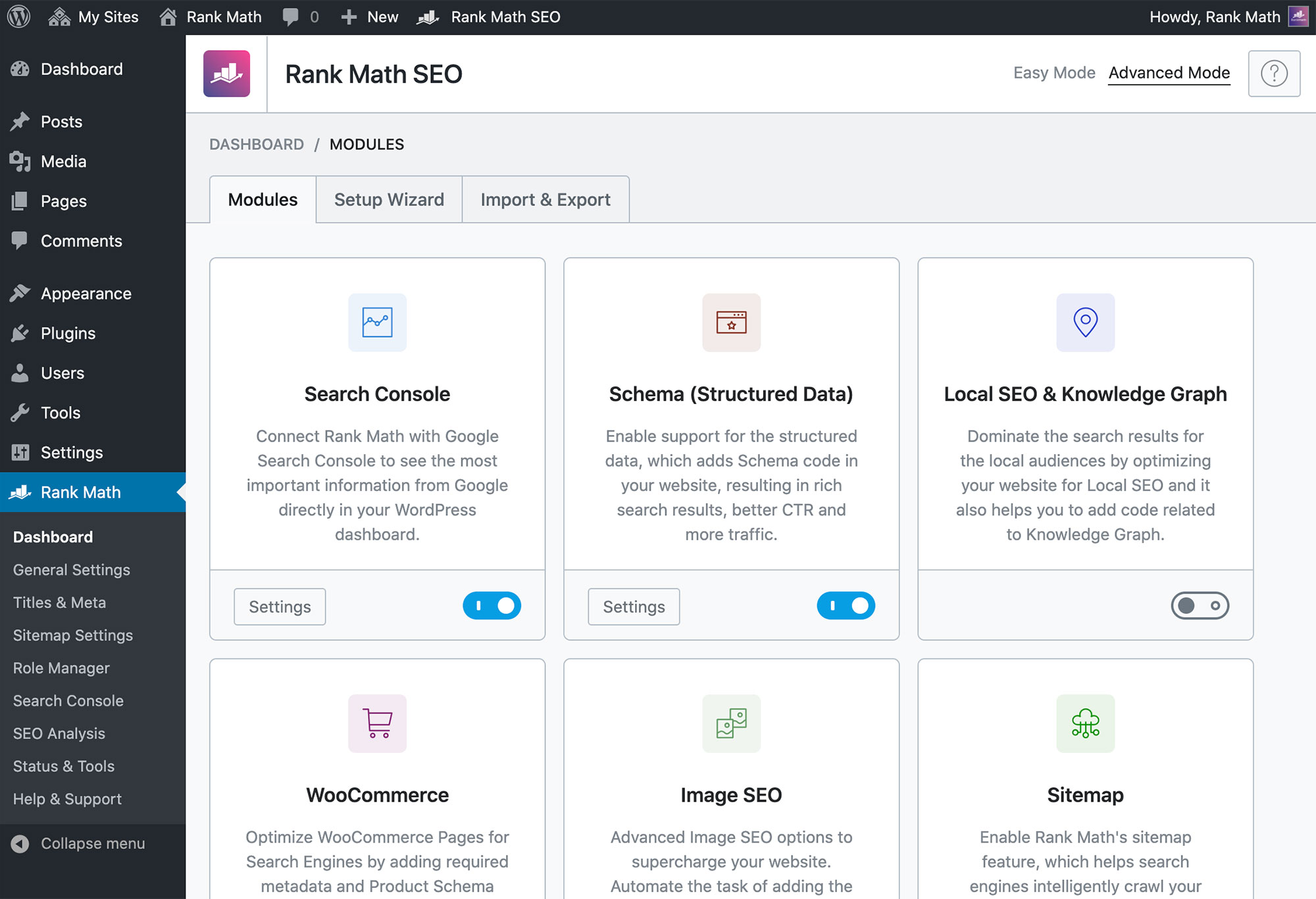
Plugins are the secret sauce that can take your WordPress photography website to the next level. Here are some must-have plugins for real estate agents:
- Slider Revolution: Create stunning property galleries and sliders to showcase your listings.
- Rank Math SEO: Optimize your content for search engines with this powerful plugin.
- WP Property: Manage property listings, add advanced search filters, and integrate with MLS.
These plugins not only enhance functionality but also improve user experience, making it easier for visitors to explore your website.
Call to Action
Ready to elevate your real estate business? Start building your WordPress photography website today!
Whether you’re showcasing properties or promoting your photography services, a professional website can make all the difference.
Contact Us For Your Website Design | Check Our Blog | Contact Us For Your SEO Blog Writing
FAQs
1. What is the best WordPress theme for real estate photography?
The best theme depends on your needs, but popular options include Real Homes, Houzez, and Oshine. These themes offer customizable layouts and features tailored for real estate professionals.
2. How can I optimize my real estate website for SEO?
Focus on keyword research, image optimization, and local SEO strategies. Use plugins like Yoast SEO to streamline the process.
3. Do I need a professional photographer for my real estate website?
While professional photography is ideal, you can also use high-quality cameras and editing tools to create stunning images yourself.
4. Can I integrate MLS listings into my WordPress website?
Yes, plugins like WP Property and IDX Broker allow you to integrate MLS listings seamlessly.
By following this guide, you’ll be well on your way to creating a WordPress photography website that attracts clients and boosts your real estate business. Don’t wait—start building your dream website today Or contact us to help you out!
![Canon eos rp + 35mm vs 50mm lens] to good facial expression](https://webtriiv.link/wp-content/uploads/2025/02/35mm-vs-50mm-lens-1080x675.png)
by admin | Feb 11, 2025 | Blog
Capturing authentic facial expressions is one of the most rewarding aspects of portrait photography. But choosing the right lens can make all the difference.
If you’re using the Canon EOS RP, you might be wondering whether the 35mm or 50mm lens is better for this purpose.
Both lenses have their strengths, but which one is ideal for capturing those perfect facial expressions?
In this guide, we’ll compare the Canon EOS RP with a 35mm vs 50mm lens, helping you decide which one suits your portrait photography needs.
Canon EOS RP 35mm vs 50mm: Which Lens is Better for Facial Expressions?
When it comes to portrait photography, the lens you choose can significantly impact the final result.
The Canon EOS RP is a versatile mirrorless camera, but pairing it with the right lens is key to capturing stunning facial expressions. Let’s break down the differences between the 35mm and 50mm lenses.
35mm Lens: Wide and Expressive
The 35mm lens is a popular choice for environmental portraits.
It offers a wider field of view, allowing you to include more of the background while still focusing on your subject’s facial expressions.
This makes it ideal for storytelling and capturing candid moments.
- Pros:
- Great for full-body or half-body shots.
- Adds context to the portrait with background details.
- Perfect for indoor or tight spaces.
- Cons:
- Can distort facial features if you get too close.
- Less compression compared to the 50mm lens.
50mm Lens: Classic and Flattering
The 50mm lens, often referred to as the “nifty fifty,” is a classic choice for portrait photography.
It provides a natural perspective that closely resembles the human eye, making it ideal for capturing facial expressions without distortion.
- Pros:
- Flattering compression for facial features.
- Excellent for close-up portraits.
- Creates a beautiful background blur (bokeh).
- Cons:
- Narrower field of view compared to the 35mm.
- Requires more space for full-body shots.
Key Point #1: 35mm Lens for Environmental Portraits
![Canon eos rp + 35mm vs 50mm lens] to good facial expression A photographer captures an outdoor portrait with a 35mm lens, focusing on a subject with expressive features against a captivating natural backdrop.](https://api.junia.ai/storage/v1/object/sign/user-generated-images/35c2d12b-c47f-47e2-8c62-757c735c9ca3/584c151b-0b15-4050-84f4-c1d7fe5f1cb2.png?token=eyJhbGciOiJIUzI1NiIsInR5cCI6IkpXVCJ9.eyJ1cmwiOiJ1c2VyLWdlbmVyYXRlZC1pbWFnZXMvMzVjMmQxMmItYzQ3Zi00N2UyLThjNjItNzU3YzczNWM5Y2EzLzU4NGMxNTFiLTBiMTUtNDA1MC04NGY0LWMxZDdmZTVmMWNiMi5wbmciLCJpYXQiOjE3MzkyMzYxOTUsImV4cCI6MjA1NDU5NjE5NX0.Wrki0YClGM79dLVLKkzjEZtmgq1-AiM915cY9wluKFc)
The 35mm lens shines when you want to tell a story through your portraits.
Its wider angle allows you to include more of the surroundings, making it perfect for environmental portraits.
For example, if you’re shooting a subject in a bustling city or a cozy café, the 35mm lens can capture both the subject’s facial expressions and the ambiance of the setting.
-
Tips for Using the 35mm Lens:
- Maintain a moderate distance to avoid distortion.
- Use a wide aperture (e.g., f/1.8) to isolate the subject.
- Experiment with angles to add depth to your composition.
Key Point #2: 50mm Lens for Flattering Close-Ups
![Canon eos rp + 35mm vs 50mm lens] to good facial expression A close-up portrait of a smiling person with expressive features, set against a softly blurred background, showcasing warmth and personality in natural light.](https://api.junia.ai/storage/v1/object/sign/user-generated-images/35c2d12b-c47f-47e2-8c62-757c735c9ca3/833d06d7-4bfc-4933-8a89-6b21ed77f89a.png?token=eyJhbGciOiJIUzI1NiIsInR5cCI6IkpXVCJ9.eyJ1cmwiOiJ1c2VyLWdlbmVyYXRlZC1pbWFnZXMvMzVjMmQxMmItYzQ3Zi00N2UyLThjNjItNzU3YzczNWM5Y2EzLzgzM2QwNmQ3LTRiZmMtNDkzMy04YTg5LTZiMjFlZDc3Zjg5YS5wbmciLCJpYXQiOjE3MzkyMzYxMjYsImV4cCI6MjA1NDU5NjEyNn0.Z6WGKHM843NZtN0uE539yyeeYnX54AyNgpXHdW_IQxQ)
If your goal is to focus solely on your subject’s facial expressions, the 50mm lens is the way to go.
Its natural perspective and flattering compression make it a favorite among portrait photographers.
Whether you’re shooting headshots or close-ups, the 50mm lens ensures that your subject’s features are rendered beautifully.
-
Tips for Using the 50mm Lens:
- Get closer to your subject for intimate shots.
- Use a wide aperture (e.g., f/1.4) for creamy bokeh.
- Pay attention to lighting to highlight facial expressions.
Key Point #3: Choosing the Right Lens for Your Style
![Canon eos rp + 35mm vs 50mm lens] to good facial expression A split image showing a vibrant outdoor group portrait on one side and a close-up of an expressive face on the other, with a softly blurred background and natural lighting.](https://api.junia.ai/storage/v1/object/sign/user-generated-images/35c2d12b-c47f-47e2-8c62-757c735c9ca3/12bab898-d7a7-4bfa-b132-b916c615bfa9.png?token=eyJhbGciOiJIUzI1NiIsInR5cCI6IkpXVCJ9.eyJ1cmwiOiJ1c2VyLWdlbmVyYXRlZC1pbWFnZXMvMzVjMmQxMmItYzQ3Zi00N2UyLThjNjItNzU3YzczNWM5Y2EzLzEyYmFiODk4LWQ3YTctNGJmYS1iMTMyLWI5MTZjNjE1YmZhOS5wbmciLCJpYXQiOjE3MzkyMzYwOTQsImV4cCI6MjA1NDU5NjA5NH0.buz_LdNQuTZPeA2K1r7MTT7u2MiO9AOx-23WeiDSLzo)
Ultimately, the choice between the 35mm and 50mm lens depends on your photography style and the story you want to tell.
If you prefer candid, storytelling portraits, the 35mm lens is a great option.
On the other hand, if you’re focused on capturing flattering, close-up facial expressions, the 50mm lens is the better choice.
-
Considerations:
- Shooting environment (indoor vs. outdoor).
- Desired level of background inclusion.
- Your subject’s comfort and posing style.
Call To Action
Ready to take your portrait photography to the next level?
Whether you choose the 35mm vs 50mm lens for your Canon EOS RP, mastering facial expressions is key to creating stunning portraits.
Share your experiences in the comments below, and don’t forget to explore our [website for your photography website design] for more tips and recommendations!
FAQs
1. Is the 35mm or 50mm lens better for beginners?
The 50mm lens is often recommended for beginners due to its simplicity and natural perspective.
However, the 35mm lens is also beginner-friendly and offers more versatility for different types of shots.
2. Can I use the 35mm lens for close-up portraits?
Yes, but be cautious of distortion when shooting too close.
Maintain a moderate distance to keep facial features natural.
3. Which lens is better for low-light photography?
Both lenses perform well in low light, but the 50mm lens typically has a wider maximum aperture (e.g., f/1.4), making it slightly better for low-light conditions.
4. Should I invest in both 35mm and 50mm lenses?
If your budget allows, having both lenses gives you more flexibility.
The 35mm is great for environmental shots, while the 50mm excels in close-up portraits.
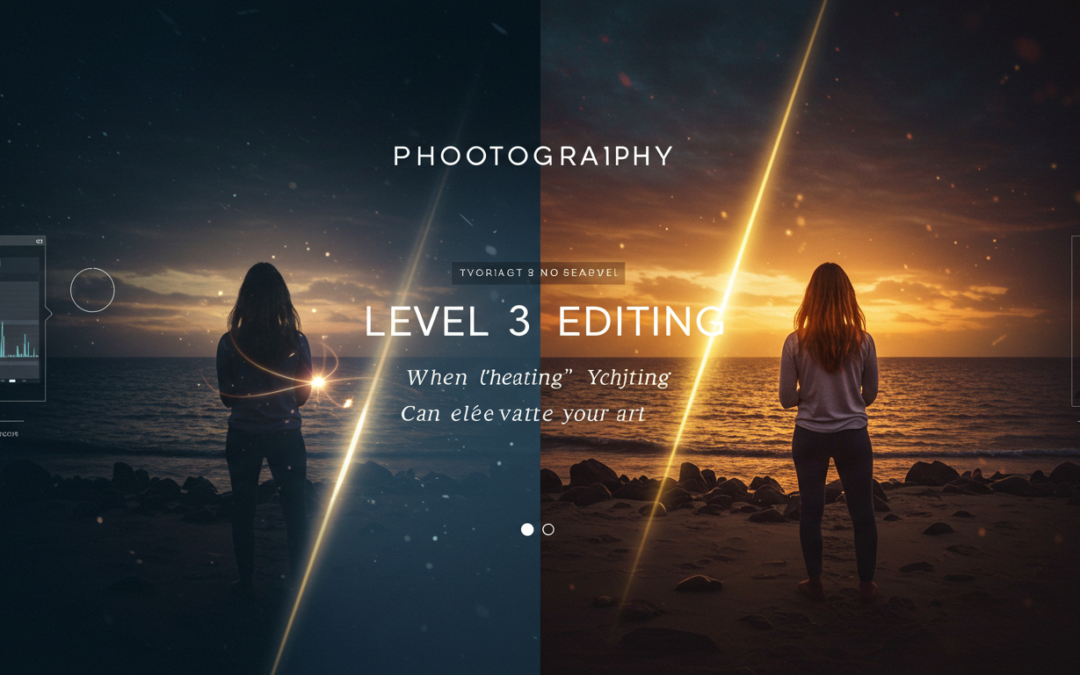
by admin | Feb 7, 2025 | Blog
Photography level 3 editing is where artistry meets technical skill, allowing photographers to transform good photos into breathtaking masterpieces.
But what happens when editing crosses the line into “cheating”?
While purists may argue against altering photos too heavily, there’s a growing acceptance of ethical editing techniques that enhance reality without misleading viewers.
In this post, we’ll explore how to use photography level 3 editing to ethically “cheat” and elevate your work, ensuring your photos stand out while maintaining authenticity.
What is Photography Level 3 Editing?
Photography level 3 editing refers to advanced techniques that go beyond basic adjustments like cropping or color correction.
This stage involves intricate retouching, compositing, and creative manipulation to achieve a specific artistic vision.
For example, level 3 editing might include:
- Removing distracting elements from a scene.
- Adding or enhancing lighting effects.
- Blending multiple exposures for a perfect shot.
While these techniques can be seen as “cheating,” they’re widely accepted in professional photography when used ethically.
The key is to enhance the story without distorting reality.
Key Point #1: Ethical “Cheating” in Photo Editing
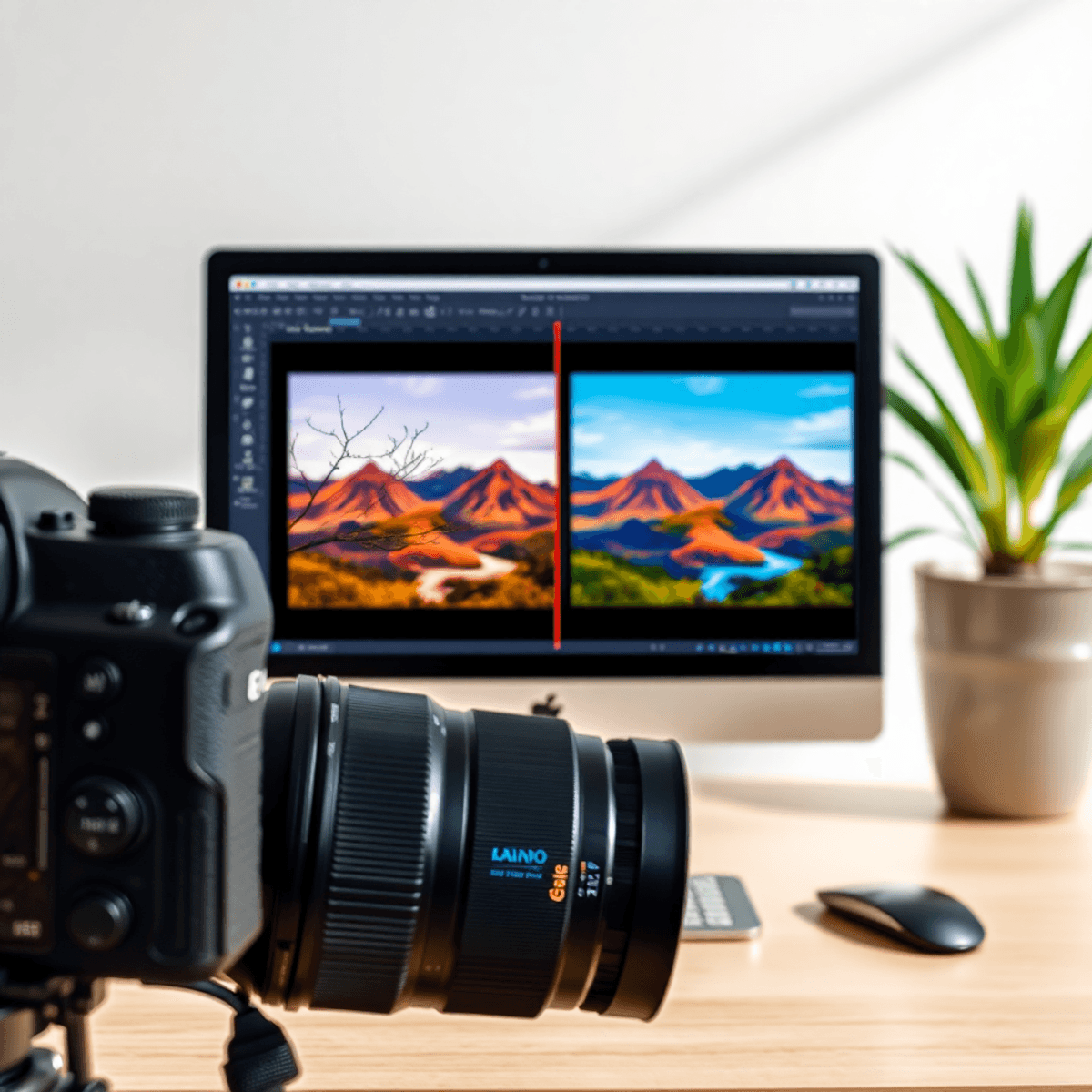
What is Ethical Cheating?
Ethical cheating in photography means using editing tools to improve an image without deceiving the audience.
For instance, removing a stray branch from a landscape photo or brightening a subject’s eyes can enhance the photo without altering its truth.
How to Do It Right:
- Use tools like Photoshop’s Content-Aware Fill to remove distractions.
- Adjust shadows and highlights to bring out details.
- Enhance colors subtly to match the mood of the scene.
Pro Tip: Always aim to preserve the integrity of the original image.
Over-editing can make photos look unnatural and lose their emotional impact.
Key Point #2: Advanced Techniques in Photography Level 3 Editing

Pushing the Boundaries
Level 3 editing often involves techniques like compositing, where multiple images are combined to create a single, cohesive piece.
For example, blending a stunning sunset with a well-lit portrait can result in a dramatic final image.
Tools to Master:
- Layer Masks in Photoshop for seamless blending.
- Frequency Separation for flawless skin retouching.
- Dodge and Burn to add depth and dimension.
When done right, photography level 3 editing can turn a good photo into a jaw-dropping masterpiece.
Key Point #3: When Does Editing Cross the Line?
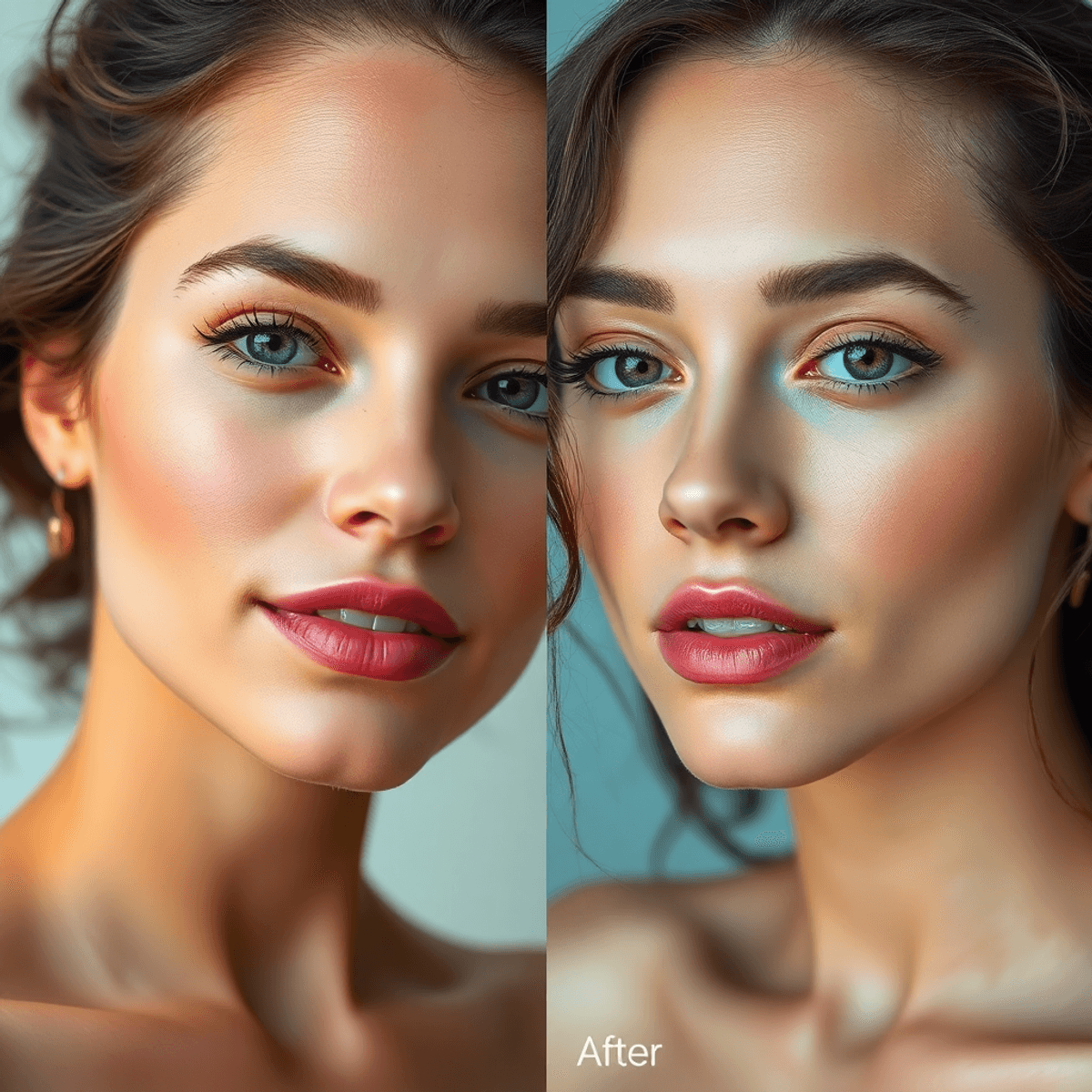
The Fine Line Between Enhancement and Deception
While editing can improve photos, it’s important to know when to stop.
Over-editing can lead to unrealistic results, which can damage your credibility as a photographer.
Signs You’ve Gone Too Far:
- Skin looks plastic or overly smoothed.
- Colors are unnaturally vibrant.
- The photo no longer resembles the original scene.
Pro Tip: Always ask yourself, “Does this edit serve the story I’m trying to tell?”
If the answer is no, it’s time to dial it back.
Professional photo retouching should enhance, not overpower, the natural beauty of your subject.
Call to Action (CTA)
Ready to take your photo editing skills to the next level?
If your enjoyed our guide to mastering photography level 3 editing and want to learn how to ethically “cheat” your way to stunning photos and also attract leads for your photography business.
Whether you’re a hobbyist or a professional, our tips will help you create business that truly stand out.
FAQs
1. What is the difference between level 2 and level 3 photo editing?
Level 2 editing focuses on basic adjustments like exposure and color correction, while level 3 editing involves advanced techniques such as compositing, retouching, and creative manipulation.
2. Is it okay to edit photos for competitions?
It depends on the competition rules. Some contests allow minimal editing, while others require completely unaltered images.
Always check the guidelines before submitting.
3. How can I learn advanced photo editing techniques?
Start with online tutorials, invest in courses, and practice regularly.
Tools like Photoshop and Lightroom offer endless possibilities for mastering level 3 editing.
4. Can editing improve a poorly shot photo?
While editing can enhance a photo, it can’t fix fundamental issues like poor composition or focus.
Always aim to get the best possible shot in-camera.

 Before choosing a policy, it’s crucial to assess your photographic equipment and determine your coverage needs. Ask yourself:
Before choosing a policy, it’s crucial to assess your photographic equipment and determine your coverage needs. Ask yourself:
 When insuring photographic equipment, it’s crucial to read the fine print. Policies vary, and some may exclude certain types of damage or theft. Here’s a breakdown of common coverage areas:
When insuring photographic equipment, it’s crucial to read the fine print. Policies vary, and some may exclude certain types of damage or theft. Here’s a breakdown of common coverage areas: Beyond basic coverage, you may want to explore additional options to fully protect your photographic equipment. These include:
Beyond basic coverage, you may want to explore additional options to fully protect your photographic equipment. These include:





 Before committing to any professional photography equipment, it’s crucial to test it out. Here’s why:
Before committing to any professional photography equipment, it’s crucial to test it out. Here’s why:
 When comparing the Nikon 80-400 vs 200-500, the focal range is one of the most critical factors. The Nikon 80-400 offers a broader range, starting at 80mm, which is perfect for capturing closer subjects like portraits or events. On the other hand, the Nikon 200-500 starts at 200mm, making it a dedicated telephoto lens for distant subjects like wildlife or sports.
When comparing the Nikon 80-400 vs 200-500, the focal range is one of the most critical factors. The Nikon 80-400 offers a broader range, starting at 80mm, which is perfect for capturing closer subjects like portraits or events. On the other hand, the Nikon 200-500 starts at 200mm, making it a dedicated telephoto lens for distant subjects like wildlife or sports. Both lenses deliver excellent image quality, but there are subtle differences. The Nikon 80-400 produces sharper images with better color contrast, thanks to its advanced optical design. The Nikon 200-500, while slightly softer at the edges, still performs exceptionally well for its price range.
Both lenses deliver excellent image quality, but there are subtle differences. The Nikon 80-400 produces sharper images with better color contrast, thanks to its advanced optical design. The Nikon 200-500, while slightly softer at the edges, still performs exceptionally well for its price range. Portability is another crucial factor in the Nikon 80-400 vs 200-500 debate. The 80-400 is significantly lighter and more compact, making it easier to carry during long shoots or travel. The 200-500, while heavier, is built like a tank and feels more durable in hand.
Portability is another crucial factor in the Nikon 80-400 vs 200-500 debate. The 80-400 is significantly lighter and more compact, making it easier to carry during long shoots or travel. The 200-500, while heavier, is built like a tank and feels more durable in hand.
 The foundation of any great WordPress photography website is the theme.
The foundation of any great WordPress photography website is the theme.
![Canon eos rp + 35mm vs 50mm lens] to good facial expression](https://webtriiv.link/wp-content/uploads/2025/02/35mm-vs-50mm-lens-1080x675.png)
![Canon eos rp + 35mm vs 50mm lens] to good facial expression A photographer captures an outdoor portrait with a 35mm lens, focusing on a subject with expressive features against a captivating natural backdrop.](https://api.junia.ai/storage/v1/object/sign/user-generated-images/35c2d12b-c47f-47e2-8c62-757c735c9ca3/584c151b-0b15-4050-84f4-c1d7fe5f1cb2.png?token=eyJhbGciOiJIUzI1NiIsInR5cCI6IkpXVCJ9.eyJ1cmwiOiJ1c2VyLWdlbmVyYXRlZC1pbWFnZXMvMzVjMmQxMmItYzQ3Zi00N2UyLThjNjItNzU3YzczNWM5Y2EzLzU4NGMxNTFiLTBiMTUtNDA1MC04NGY0LWMxZDdmZTVmMWNiMi5wbmciLCJpYXQiOjE3MzkyMzYxOTUsImV4cCI6MjA1NDU5NjE5NX0.Wrki0YClGM79dLVLKkzjEZtmgq1-AiM915cY9wluKFc)
![Canon eos rp + 35mm vs 50mm lens] to good facial expression A close-up portrait of a smiling person with expressive features, set against a softly blurred background, showcasing warmth and personality in natural light.](https://api.junia.ai/storage/v1/object/sign/user-generated-images/35c2d12b-c47f-47e2-8c62-757c735c9ca3/833d06d7-4bfc-4933-8a89-6b21ed77f89a.png?token=eyJhbGciOiJIUzI1NiIsInR5cCI6IkpXVCJ9.eyJ1cmwiOiJ1c2VyLWdlbmVyYXRlZC1pbWFnZXMvMzVjMmQxMmItYzQ3Zi00N2UyLThjNjItNzU3YzczNWM5Y2EzLzgzM2QwNmQ3LTRiZmMtNDkzMy04YTg5LTZiMjFlZDc3Zjg5YS5wbmciLCJpYXQiOjE3MzkyMzYxMjYsImV4cCI6MjA1NDU5NjEyNn0.Z6WGKHM843NZtN0uE539yyeeYnX54AyNgpXHdW_IQxQ)
![Canon eos rp + 35mm vs 50mm lens] to good facial expression A split image showing a vibrant outdoor group portrait on one side and a close-up of an expressive face on the other, with a softly blurred background and natural lighting.](https://api.junia.ai/storage/v1/object/sign/user-generated-images/35c2d12b-c47f-47e2-8c62-757c735c9ca3/12bab898-d7a7-4bfa-b132-b916c615bfa9.png?token=eyJhbGciOiJIUzI1NiIsInR5cCI6IkpXVCJ9.eyJ1cmwiOiJ1c2VyLWdlbmVyYXRlZC1pbWFnZXMvMzVjMmQxMmItYzQ3Zi00N2UyLThjNjItNzU3YzczNWM5Y2EzLzEyYmFiODk4LWQ3YTctNGJmYS1iMTMyLWI5MTZjNjE1YmZhOS5wbmciLCJpYXQiOjE3MzkyMzYwOTQsImV4cCI6MjA1NDU5NjA5NH0.buz_LdNQuTZPeA2K1r7MTT7u2MiO9AOx-23WeiDSLzo)




